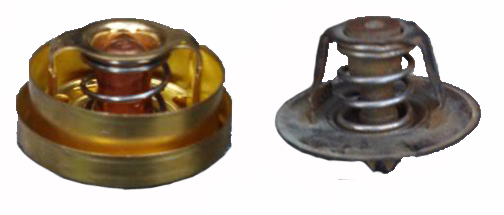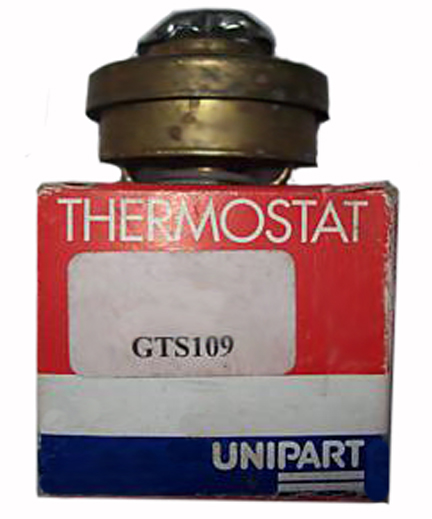
|
The series III and earlier Land Rovers use a skirted thermostat. There is a cylinder or skirt that moves when the thermostat opens. This moving cylinder is actually a coolant flow valve.
The thermostat housing has an oval opening in the side which leads to the bypass hose. The bypass hose forms a passage between the radiator entrance and exit allowing coolant to be pumped through the engine while the thermostat is closed. If there were no coolant flow while the thermostat is closed local hot spots will occur in the head that will eventually cause head cracks. The skirt on the thermostat closes off the oval bypass opening when the thermostat is open. When the thermostat is closed, the skirt is away from the opening so that water can flow through the bypass.
If you use the common skirtless thermostat the by-pass opening remains open continuously regardless of engine temperature. The pump of course will pump the same amount but the flow will take the line of least resistance which is through the by-pass rather than the long way around through the radiator. This will cause your engine to run hotter in warm weather. The temperature gauge sender is located at the front of the engine by the thermostat. With most of the water bypassing the radiator, temperatures at the rear of the head can be significantly higher than your temperature gauge indicates. The high temperature gradient can cause the head to crack. Engines from the 110 onwards have a different thermostat housing and uses the common skirtless thermostat. Instead of the large oval opening the housing has a bypass hole about 3/8" in diameter. When the thermostat is closed, the small opening to the bypass hose provides sufficient bypass flow to keep hot sports from occurring in the head. When the thermostat is open the small hole provides more restriction than the radiator forcing most of the coolant to flow through the radiator. |
||||
|
If you would like to discuss any of the contents, or just say hi, please feel free to .
© 1997, 2001, 2017 TeriAnn Wakeman. All rights reserved. |
||||


